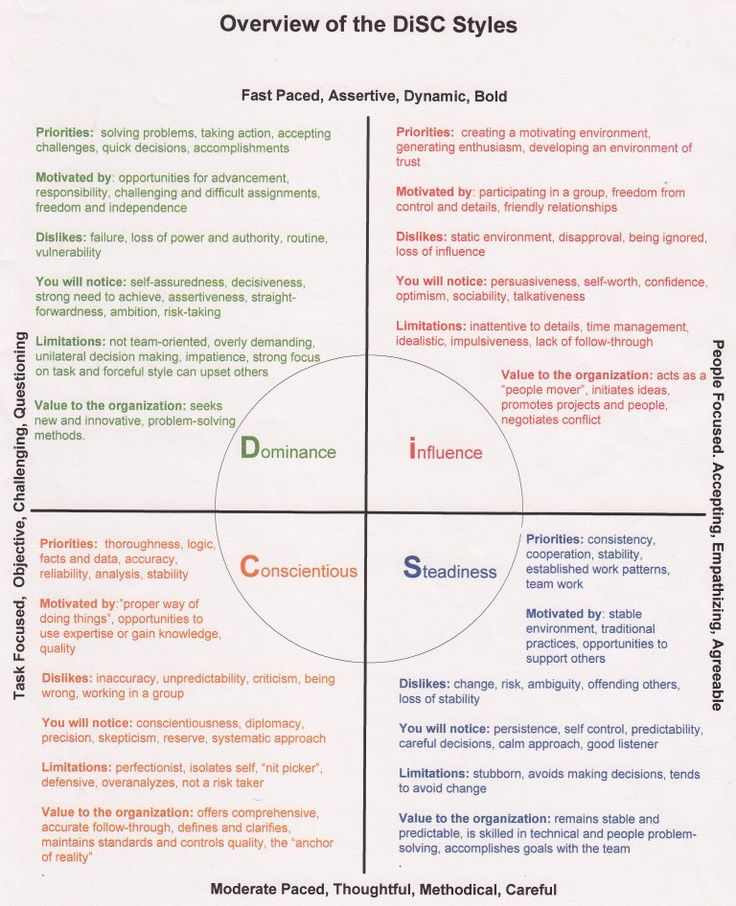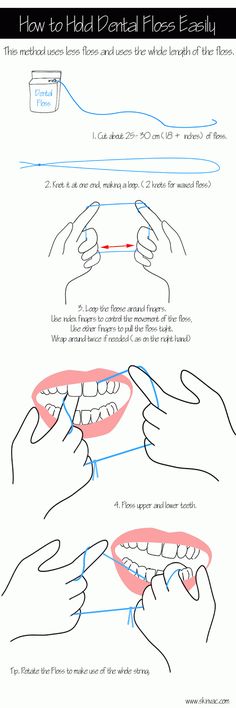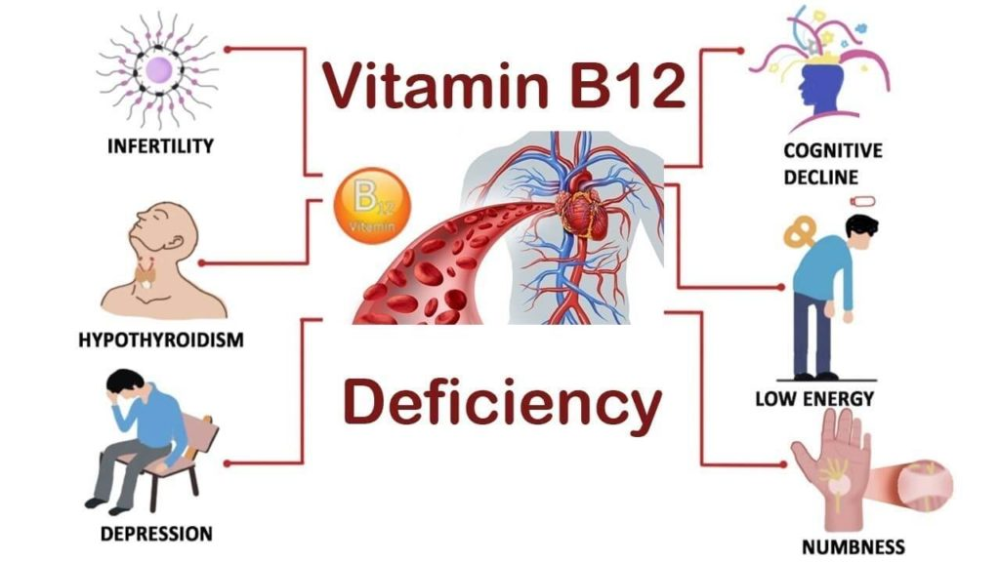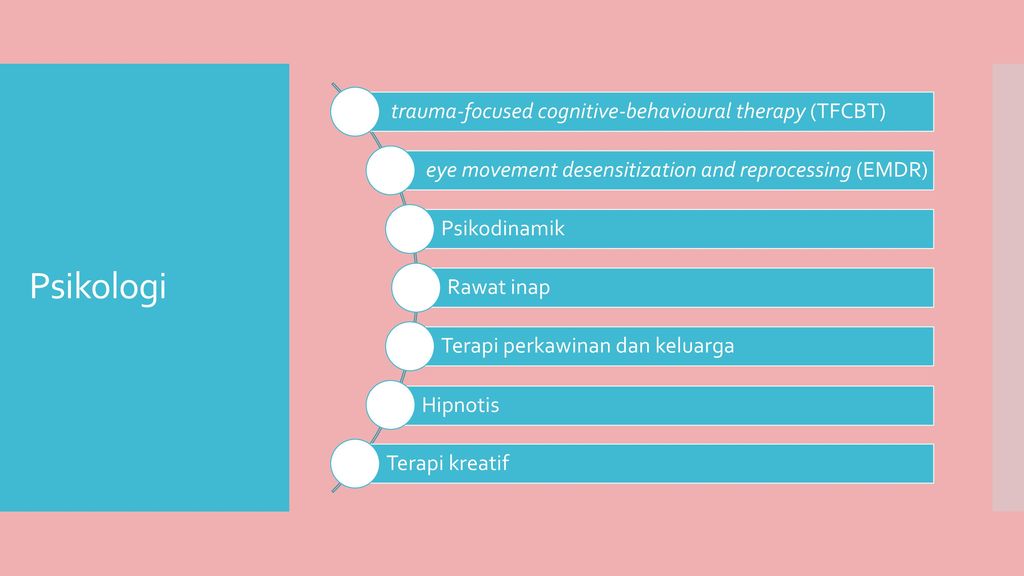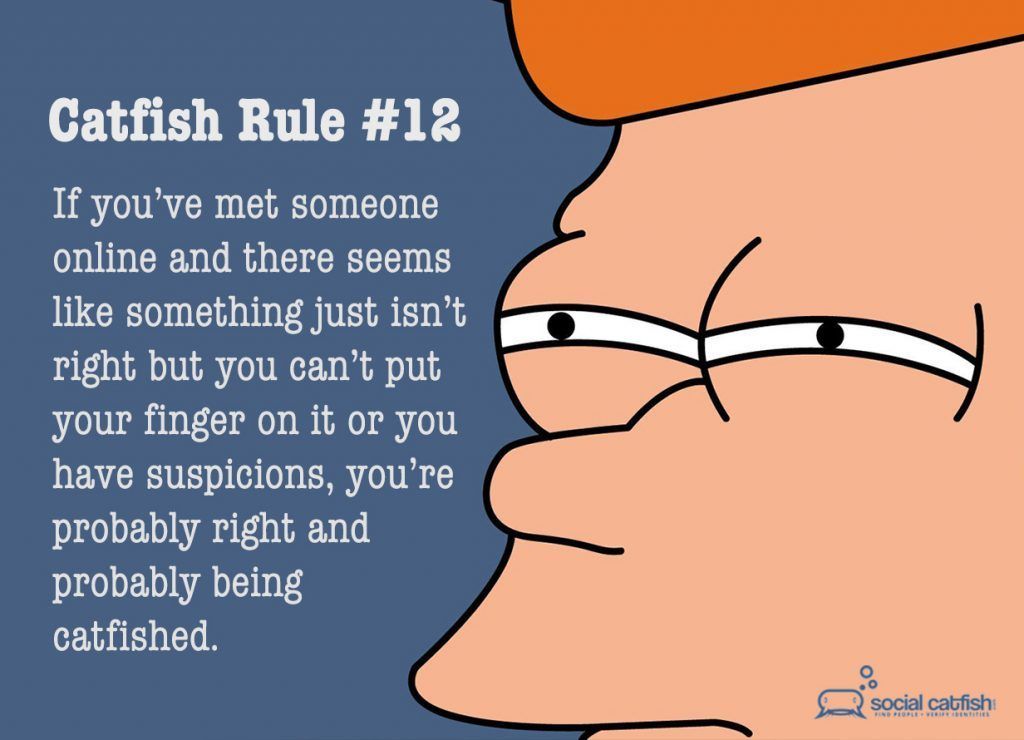Four personality types disc
What Are the Four DiSC® Personality Types?
Simply stated, DiSC® is a personal development model that helps people understand why they do what they do! In that regard, it is a framework that brings individual preferences and tendencies to light. In so doing, it also identifies patterns of behavior that might seem at first glance to be foreign, unfamiliar or even contrary.
The “light bulbs” that switch on when you go through DiSC® training are both consistent and predictable. Your feedback is like a reflection in a personality mirror. You are provided with rationale that explains how you perceive your environment and whether you have a tendency to respond to that environment with skepticism and questions
or with warmth and acceptance. This insight provides you with enhanced awareness of the behavior of those you interact with and attempt to influence, as well.
The feedback you receive is categorized into four basic behavioral styles. Each of us is a blend of these styles in one way or another, and no one style is “better or worse” than the other.
D: DOMINANCE—This style is both bold and skeptical. They typically dive into challenges produced by their environment and place a high priority on “winning.” They tend to be more receptive to logic, data and analysis than they are to somebody else’s “gut-level feel” or intuition. They pursue challenges in a dynamic, assertive and self-assured manner. They can also become easily irritated with opposing points of view which elicits a response that can be categorized as indifference, intolerance or hostility.
i: INFLUENCE—This style is both bold and accepting. They are “people oriented” and are motivated by their connections with others.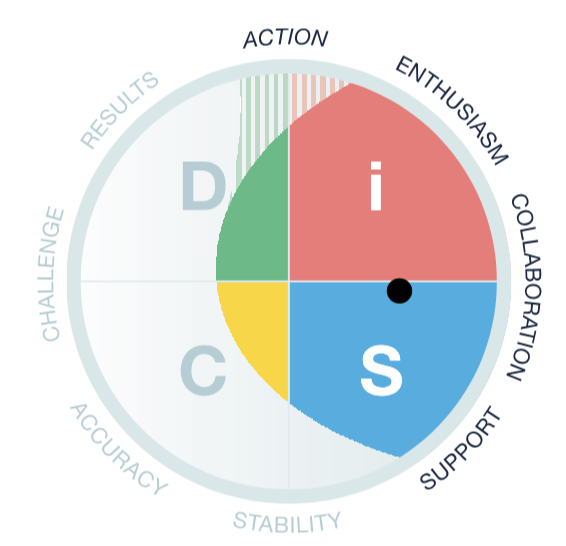 They tend to welcome others in a warm and inviting manner that encourages collaboration and generates excitement. They pursue environmental challenges in an outgoing, enthusiastic and optimistic manner. They are also prone to “keep people happy” and as a result may be reluctant to provide others with constructive feedback or pay adequate attention to follow-through or attention to detail.
They tend to welcome others in a warm and inviting manner that encourages collaboration and generates excitement. They pursue environmental challenges in an outgoing, enthusiastic and optimistic manner. They are also prone to “keep people happy” and as a result may be reluctant to provide others with constructive feedback or pay adequate attention to follow-through or attention to detail.
S: STEADINESS—This style is both cautious and accepting. They are highly motivated to help others and maintain the stability of their environment. They excel at cooperation and are routinely described as “calm” or “patient.” They respond to the challenges of their environment in a thoughtful and comparatively methodical manner routinely providing others with empathy and support. They have a tendency to struggle with change that disrupts their routine and can be shocked, stunned or temporarily dazed by its emergence.
C: CONSCIENTIOUSNESS—This style is both cautious and skeptical. They can best be described as “detail oriented” and have a strong preference for an environment defined by its stability. They enjoy opportunities to demonstrate their expertise and share the quality of their work. They are driven by logic and objective analysis. As such, they will typically respond to disruptions in their routine by openly questioning the feasibility and viability of the proposed path forward. They have a tendency to “overanalyze” but when they reach a level of comfort, they can serve as a calming source of objective support.
If you happen to be a leader that is genuinely interested in becoming more effective, DiSC® training is a very good place to start! If nothing else, you can learn important things about yourself … as well as important things about those you are attempting to influence. No way that’s going to hurt you … right?
No way that’s going to hurt you … right?
And with bias duly noted, if you’re looking to take action along those lines, we (The Center for Leadership Studies) offer a DiSC training program that is fully integrated with Situational Leadership®(Leading With DiSC®). This program integrates the application of the Everything DiSC® Management Assessment with the Situational Leadership® Model. In so doing, it augments the learner’s ability to not only assess the readiness of a follower to perform a task but also to effectively adapt and communicate the appropriate leadership style.
What Are the Four DISC Types?
To learn about the four basic DISC behavior types, we start with the DISC circle using the diagram shown below. For a more thorough description of how the DISC circle is developed, read this summary of the DISC model.
Each quadrant of the DISC circle has descriptive words attached to it that attempt to capture the typical behavior exhibited by people who have the combination of motor and compass drives that corresponds to that quadrant.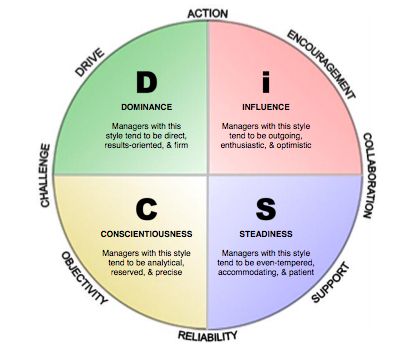 The descriptive words show behavioral traits (or tendencies) that describe each quadrant of the circle.
The descriptive words show behavioral traits (or tendencies) that describe each quadrant of the circle.
To make conversation about the model easier to manage, we often call each quadrant a behavioral type or style. As you work with the DISC model, remember that it is not technically accurate to use the phrase personality type with this model. The DISC model is a behavioral style model. We recognize that the phrase personality is often used in normal, everyday conversation when talking about the model. In fact, we acknowledge the colloquial use of the word personality with regard to this model in the name and url of this site. In practice, we prefer to use the phrase behavioral style because it more accurately fits the model and its theoretical basis.
The main characteristic trait for each behavioral type (quadrant of the DISC circle) is used as the representative word for that type:
- Dominant,
- Inspiring,
- Supportive, and
- Cautious.
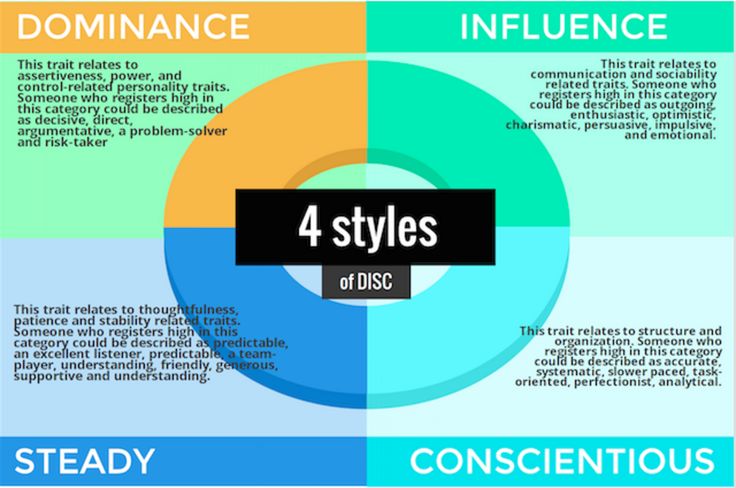
People who have both Outgoing and Task-oriented traits often exhibit DOMINANT and DIRECT behaviors. They usually focus on results, problem-solving, and the bottom-line.
People who have both Outgoing and People-oriented traits often exhibit INSPIRING and INTERACTIVE behaviors. They usually focus on interacting with people, having fun, and/or creating excitement.
People who have both Reserved and People-oriented traits often exhibit SUPPORTIVE and STEADY behaviors. They usually focus preserving relationships and on creating or maintaining peace and harmony.
People who have both Reserved and Task-oriented traits often exhibit CAUTIOUS and CAREFUL behaviors. They usually focus on facts, rules, and correctness.
Some shortcuts you can use in discussing the different behavioral types:
- the DOMINANT type is also known as High D
- the INSPIRING type is also known as High I
- the SUPPORTIVE type is also known as High S
- the CAUTIOUS type is also known as High C
The DISC model can help you understand yourself and others by describing four main, or primary, behavioral styles.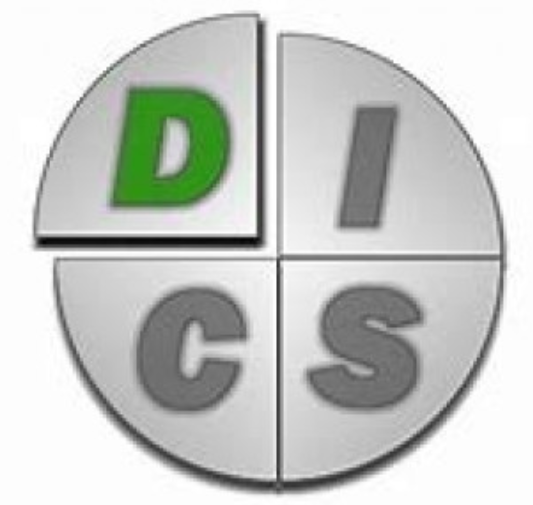 However, each individual person can, and likely will, display some of all four behavioral styles depending on the situation. This blend of styles within each person is called a style blend. Each person’s style blend will have more of some traits and less of others.
However, each individual person can, and likely will, display some of all four behavioral styles depending on the situation. This blend of styles within each person is called a style blend. Each person’s style blend will have more of some traits and less of others.
model description, characteristics and rules of application
It is not so easy to create a dream team where everyone is in their place and can apply their strengths to the benefit of the business. Sometimes there are failures: for example, for some reason, a commercial director is more interested in doing analytics than sales, and a person with the principle “who does not risk does not drink champagne” comes to the position of a lawyer.
DISC typology assessment helps to protect against such hiring mistakes, as well as to place current employees in the positions that are most suitable for them. But how to conduct an assessment correctly, what to do with its results, can you trust free tests on the Internet? What personality types are there and can they change in different circumstances?
We talked about all this with a certified expert in personality profile analysis based on DISC Olga Prozorova.
What do you learn about
👉 What is DISC
👉 What types of personality are
👉 What are the behaviors of each type
👉 What are the mixed personality types
👉 How to determine the type of personality
👉 Is it possible to use free tests from the internet
👉 Where to use DISC
Olga Prozorova, leader of Finance, HR & Operations at Benchmark Executive
What is personality typology DISC
American psychologist William Marston studied types of personality behavior. Back in 1928, he published the book The Emotions of Normal People, in which he outlined the theory of DISC.
DISC is a methodology for studying human behavior based on a four-sector model with two axes:
One axis indicates behavior - active or passive. The other axis identifies the environment as perceived by the person himself. It can be hostile or friendly/favorable.
According to the theory, people want to remain passive or active depending on how they perceive the environment: as friendly or hostile.
Thus, 4 sectors are formed:
- Active behavior in an opposing environment (D).
- Active behavior in a friendly environment (I).
- Passive behavior in a friendly environment (S).
- Passive behavior in an opposing environment (C).
It is important to understand that DISC only looks at behavioral styles and does not assess a person's intelligence, emotional intelligence, or job competencies. The evaluation results may change under the influence of external circumstances and factors, as well as over time.
For example, a person moves to another job or company. Then the model of his behavior may change after a while. Therefore, it is worth re-taking DISC at least once a year or when there are significant changes in life - not necessarily professional ones.
Characteristics of personality types
In the DISC methodology, personality types are divided into 4 types: dominance (D), influence (I), stability (S), adaptability (C).
D - dominance (active in a hostile environment)
Such people like to be in a highly competitive environment - they are results-oriented conquerors. These are achievers who are motivated to action by the heated atmosphere around or the competitive environment.
Which roles are most typical for the type: sales, commercial director.
I - influence (active in a friendly environment)
Type I people influence others in a positive way and involve them in processes. They are maximally open to communications and primarily focus on human relationships.
Show active behavior, using the power of persuasion to move from hostile situations to more favorable ones.
Which roles are most typical for the type: HR.
S - Stability (passive actions in a friendly environment)
These people feel comfortable working with well-established processes, in an environment where everything is calm and there are no opposing forces.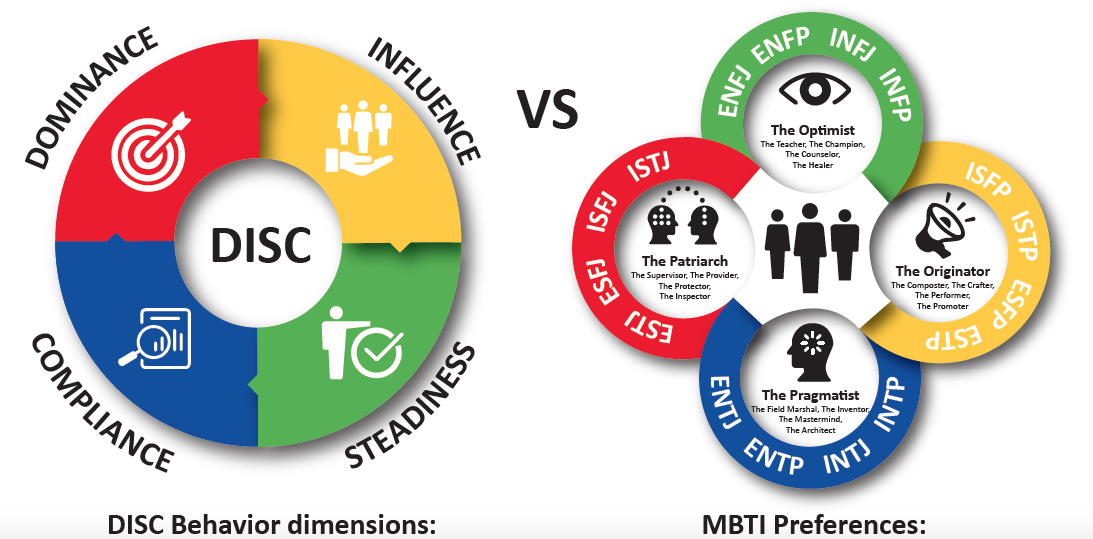 They are reliable, methodical, executive, stubborn and good-natured - they can be called "worker bees." They strive to maintain neutrality until the hostility in the environment stops.
They are reliable, methodical, executive, stubborn and good-natured - they can be called "worker bees." They strive to maintain neutrality until the hostility in the environment stops.
It is believed that the leader must necessarily be of type D, that is, be a dominator with a strong focus on results. Allegedly otherwise he will not cope with the development of business. But this is not always the case: for example, if a company is associated with a service and is engaged in the provision of services, then its director may be of type S.
What roles are most typical for the type: service department, accounting staff.
C - adaptability (passive actions in a hostile environment)
Type C people work effectively in turbulent environments and adapt quickly to change. But, unlike D, they are cautious, logical, systematic, consistent, law-abiding, accurate.
As a rule, they have an analytical mind. Seek to negate the degree of confrontation and thus avoid problems or conflict.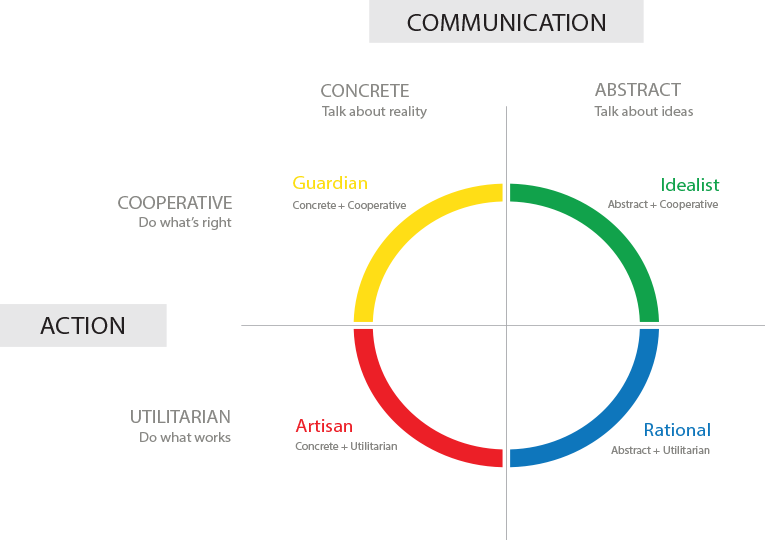
Which roles are most typical for the type: employees of the operational, analytical and legal departments.
Behavior markers of each type
Mixed personality types
It is not uncommon to find people who exhibit 2 patterns of behavior equally strongly according to the DISC system. Let's talk about these combinations.
DI - ID: red-yellow and yellow-red
One of the common combinations. Such people are inspirers and natural manipulators. They seek to charm, influence others, and lead through personal charisma or persistent persuasion.
This type of person is great at solving complex problems with original and innovative ideas.
IS - SI: yellow-green and green-yellow
This mixed type is quite rare. It is easy to communicate with such people, their distinguishing feature is contact. They treat others with great consideration, warmth and understanding.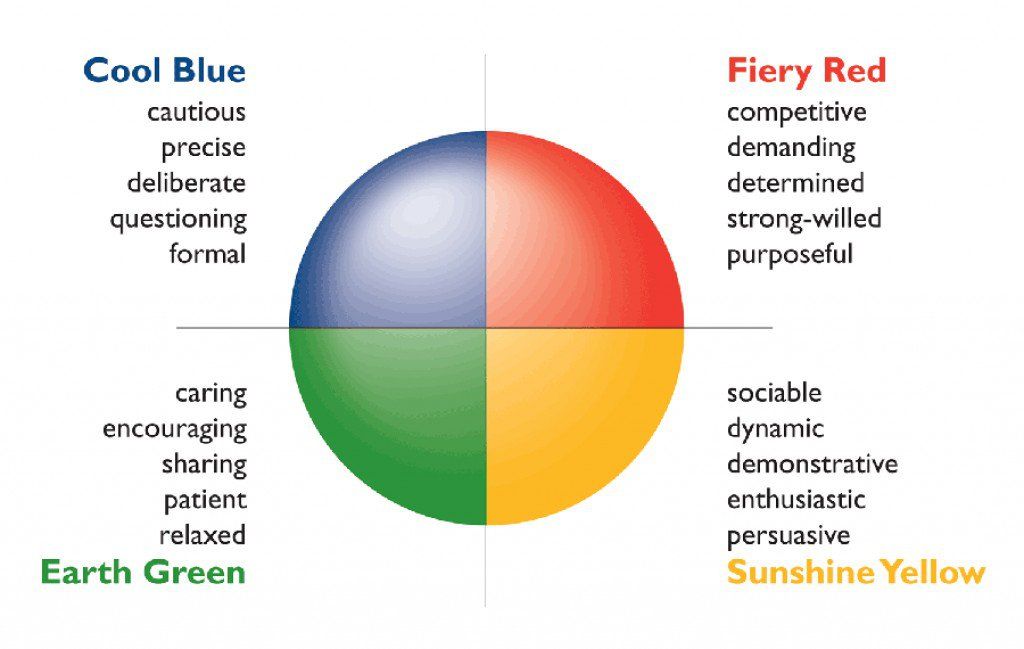 Comfort, a stable environment, peace and harmony in the team are important to them.
Comfort, a stable environment, peace and harmony in the team are important to them.
This type of person in the work environment excels in situations where you need to influence and motivate colleagues.
IC - CI: yellow-blue and blue-yellow
Contradictory type that combines opposite features. Such people are distinguished by self-confidence, intolerance and emotionality.
They are self-sufficient in any situation and perfectly motivate others when there are no guides and landmarks.
DS - SD: red-green and green-red
The most complex and rare behavioral type. A distinctive feature in behavior is mood swings and excessive initiative. People like DS - SD develop a stormy activity, while suffering from the syndrome of an excellent student - they believe that they must do the job better than anyone else.
For them, it is important that the task is completed within the agreed time frame with real, measurable results.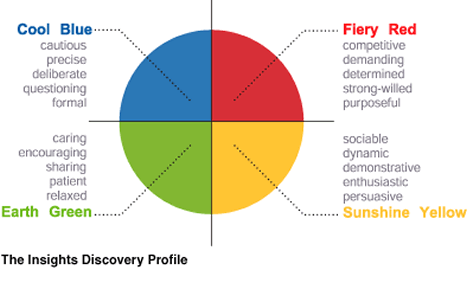
How to Determine Your Personality Type
One of the most popular and reliable ways to get a DISC assessment is the Thomas Personality Profile.
Thomas Hendrickson developed this system based on DISC in the middle of the 20th century. Profile analysis of personality allows you to accurately determine the behavior of a person in various areas of life. The report provides insight into intrinsic motivation factors, values, strengths and limitations.
DISC indicates what personality types are and how they are characterized. And the Thomas system is a tool that allows you to determine how these personality types are expressed in a particular person.
I'll tell you step by step how the assessment is done according to the Thomas system.
Step #1: Testing
Testing takes place in an automated mode: the testee answers simple questions for about 10–15 minutes. Based on the results of the answers, a detailed analysis of the personality is carried out, reflected in 3 graphs:
- self-portrait - behavior in everyday life;
- behavior at work;
- behavior in a stressful situation.
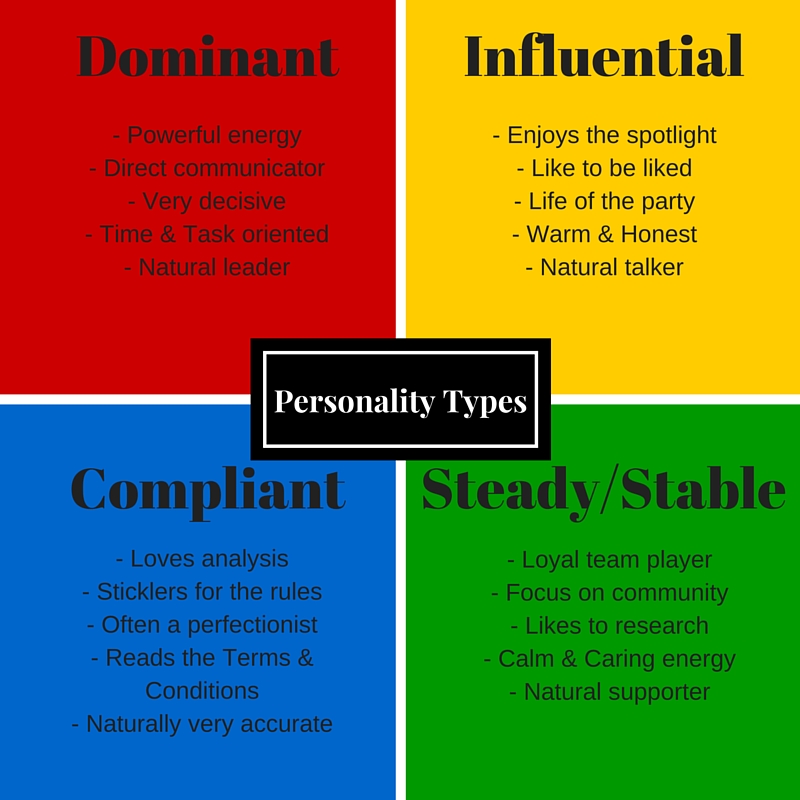
Step 2: Graph Analysis
Initially, a person is assessed on a self-portrait (graph III): starting from the highest point, then moving on to the point at the bottom. After that, the readings are compared with the graphs of behavior at work (I) and behavior under pressure (II).
It is especially interesting to compare the data with graph II. In a normal situation, a person is able to control behavior, but in stressful conditions, control weakens - additional factors break out. So on this graph, a point that was not in the self-portrait can clearly appear.
In this case, it is important to evaluate the points in the aggregate - they can compete and interact with each other. For example:
- if the line from S to C goes up, as in our chart, then this indicates the ability to take risks;
- collapse of the same line suggests that the subject is prone to independence;
- if points D and C lie at the same level below, then the person is in a state of procrastination - becomes indecisive in situations where important decisions must be made, and prefers not to move.
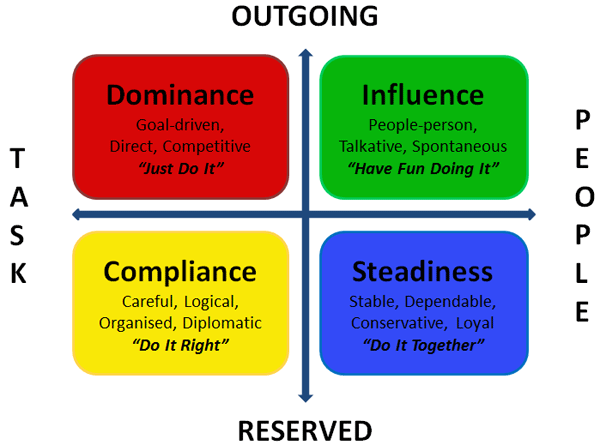
The highest point of the graph does not change and is the key one - it is by it that the type of personality's behavior is assessed. On our chart, there is also such a point - in area C. The rest of the points can change their position under the influence of various factors over time. And if two points constantly compete with each other at the top, then we can talk about a mixed personality type.
Particularly interesting are the reference points - those that lie on the graph axis. They set in motion other factors and enhance their manifestation.
Certified experts look at graphs in aggregate, analyze changes in the position of points and the interaction between them.
Step #3: Providing feedback
It is important to provide detailed expert feedback to the person assessed using the DISC methodology, indicating strong type characteristics, concerns, motivators, value to the organization. Feedback is critical: it can be provided by an external consultant or by your own employee if trained in the assessment methodology.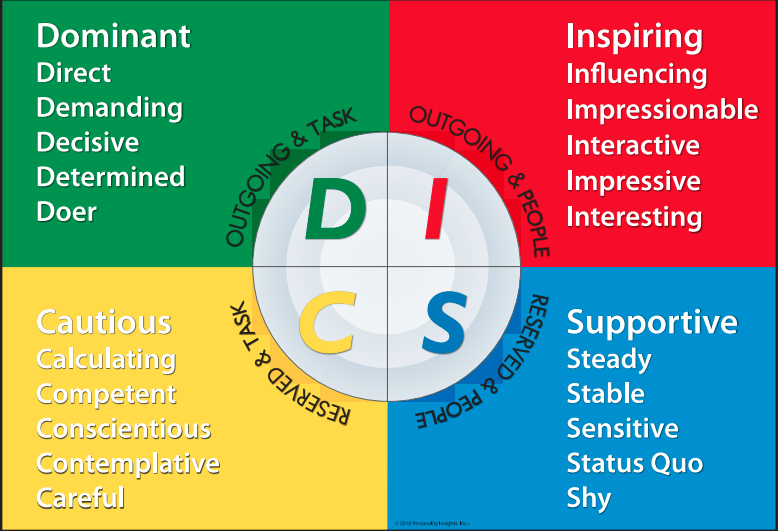
It is not enough to simply tell the subject that he belongs to type D, which is characterized by such and such traits. It is necessary to “land” formal feedback on a real person:
- highlight the benefits, nuances and risks;
- tell how this affects his work;
- suggest options for the development of growth zones.
For example, a modern HR manager needs to work not only with people, but also with analytics. This means that type I alone may not be enough - you need to pump C.
Choose between free online tests or paid consulting services
Free tests can be fun, but don't jump to conclusions based on them. To get detailed reliable information, you will have to go through paid testing through official providers.
It is essential that the provider who will conduct the evaluation not only provide a general opinion, but also be prepared to provide extensive feedback. Often, test subjects and company HRs have questions about why the result is this way and what to do with this information.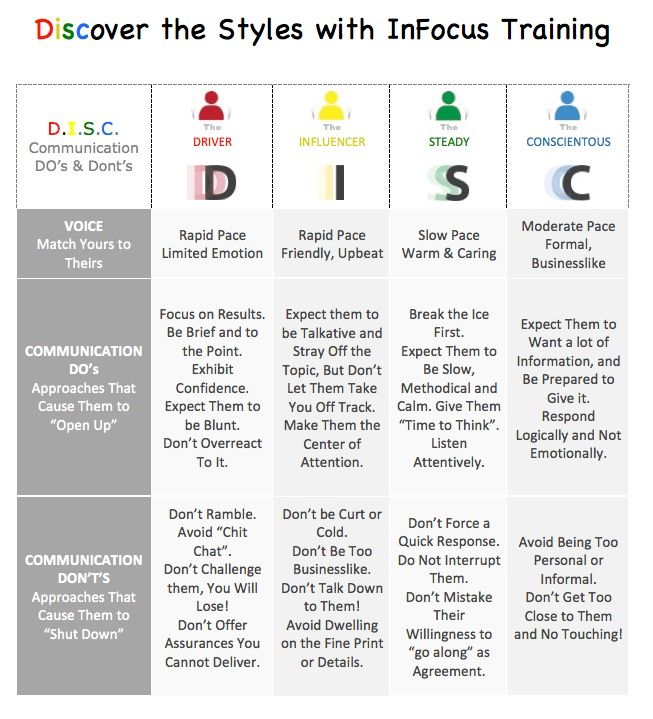 They look at the graphs and have absolutely no idea how these lines are related to the conclusions.
They look at the graphs and have absolutely no idea how these lines are related to the conclusions.
If you are testing on the knee using free sources on the Internet, and not using external certified providers, then you should not rely too much on the results of the test.
How to apply the methodology at work
To evaluate candidates
The methodology can be used at the final stage of assessing candidates for a vacant position. Let's say you have two applicants for the same role, both of them are suitable in terms of background and skills. In this case, DISC acts as an additional tool that allows you to see the whole picture - to see even what was not visible during the interview.
There are no good or bad personality types - there are those that fit or don't fit a particular role. As a result of testing, you determine which of the two candidates is more relevant to the position profile according to the behavior model.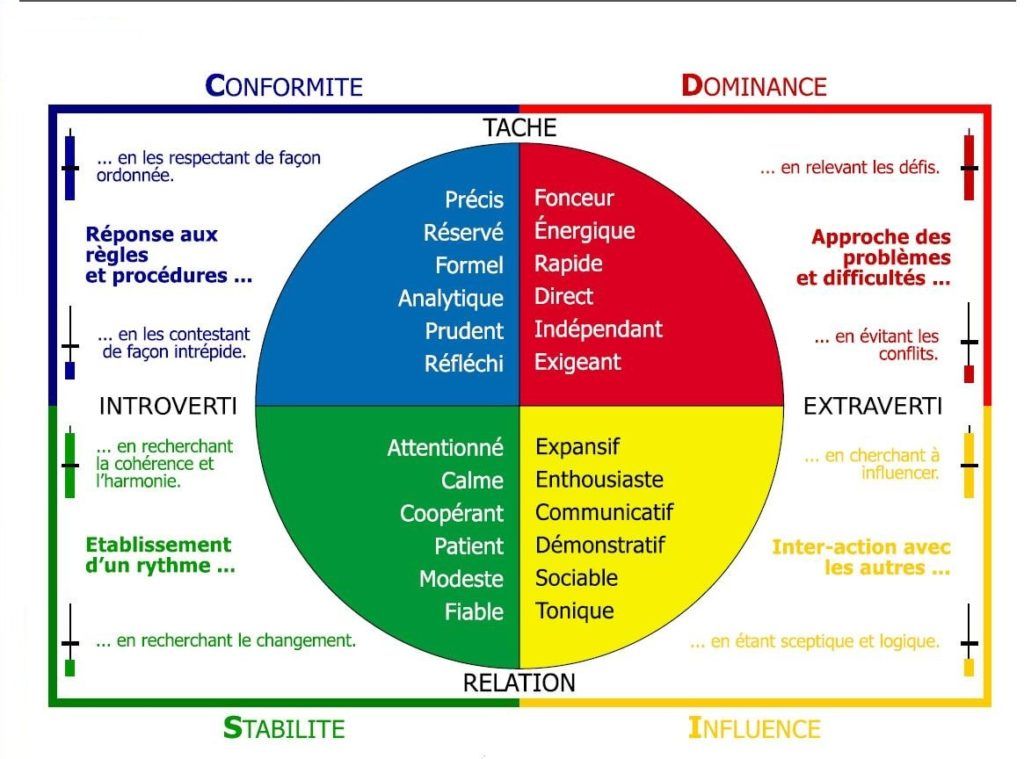
In an internal assessment
DISC can be used to assess whether a person is in the right place, how he feels and whether he is able to behave as expected of him.
For example, the commercial director of one company did not work as efficiently as expected. He was strong in analytics and planning, but did not show himself as a result-oriented leader. Before the assessment, the company did not understand what exactly was wrong, but the assessment showed that the commercial director is a type C person, not a D.
It is up to each company to decide what to do with this information. It is not always about replacement: weaknesses can be strengthened. For example, if you give the commercial director detailed feedback, pointing out points of development, then he will have the opportunity to work on his behavior and strengthen communications.
If successful, the director will increase his D-factor and performance. Of course, an employee will be able to come to such changes if he has well-developed other competencies, for example, emotional intelligence.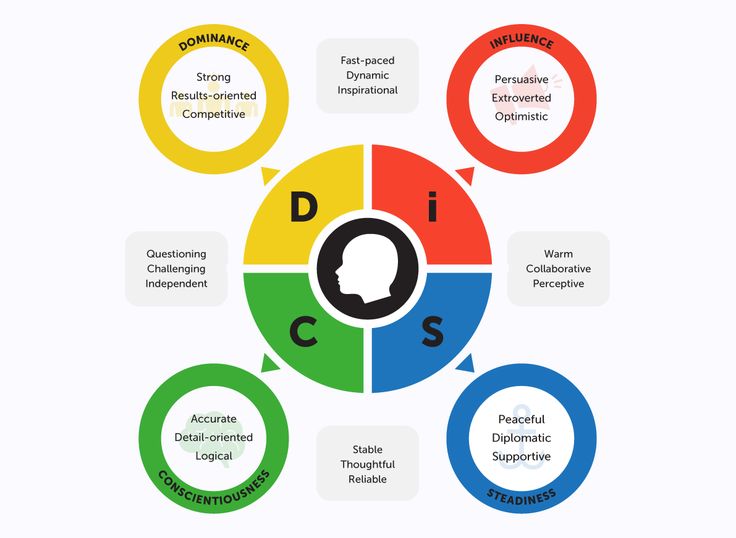
To determine the state of an employee
Using DISC, you can assess the psychological state of an employee - see frustration, burnout, depression, stress due to uncertainty.
Thus, a graph in which all points lie on the X-axis plane is called compressed. Depending on which of the three graphs is compressed, one can infer problems. For example, the compression of schedule I indicates that the employee is confused, lost his bearings, or does not understand what is required of him. Perhaps he is demotivated and is considering career changes.
This is what happens when an employee is appointed against his will to a new position. Then he feels out of place and suffers. If the HR sees such a picture, he can communicate with the employee and try to solve the problem: move him from this position or, conversely, help him find himself in a new role.
To assess the realism of the job profile
Sometimes customers are looking for a candidate who must be able to absolutely everything and combine the incompatible.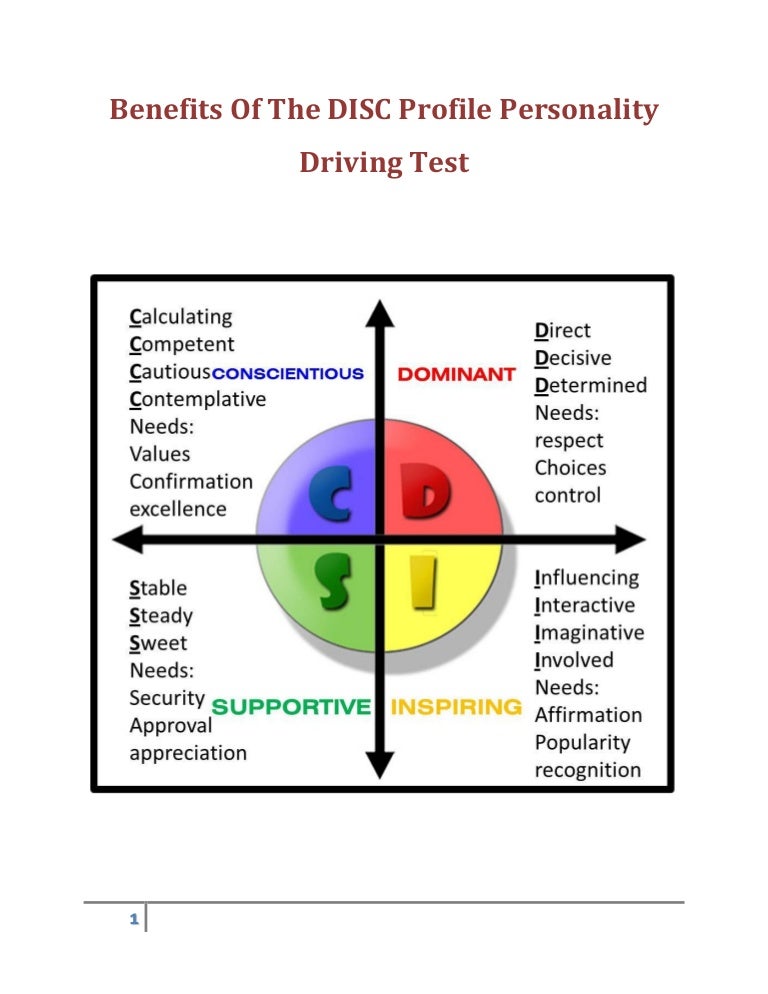 Some assessment providers allow you to fill out a job profile and then get a schedule of the person who would fit the role.
Some assessment providers allow you to fill out a job profile and then get a schedule of the person who would fit the role.
So it may turn out that the customer is looking for a "unicorn" - a candidate who must have all personality types at a high level at once.
Conclusions
- According to the DISC typology, people are divided into 4 types - depending on the perception of the environment and the activity of their own actions.
- Personality types DISC:
- D - dominant, active in a hostile environment;
- I - influencing, active actions in a friendly environment;
- S - stable, passive actions in a friendly environment;
- C - adaptive, passive actions in a hostile environment.
- In addition to people who belong to one type of personality, there are those who combine several types.
- The most popular and reliable DISC typology assessment tool is the Thomas Profile Personality Analysis.
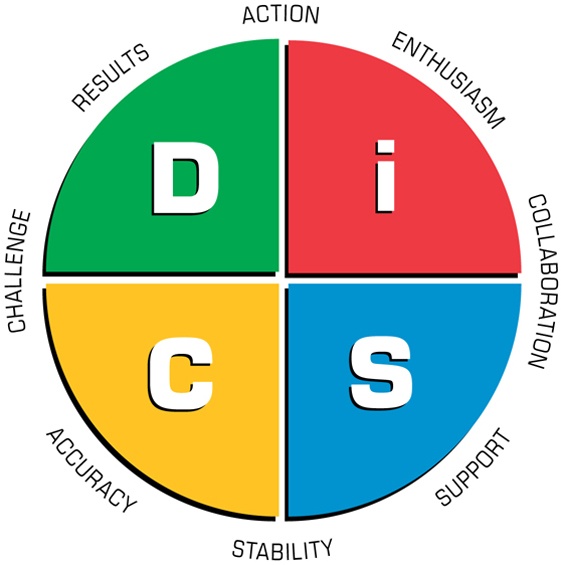
- Testing takes place automatically within 10-15 minutes. As a result, you get 3 graphs of the subject's behavior: in ordinary life, at work and in a stressful situation.
- The highest point on the graphs may indicate the type of personality. At the same time, it is important to look at the points below, as well as at the relationships.
- The graph of the stressful situation is the most revealing
- Free tests on the Internet are just fun. To get a reliable and detailed assessment, it is better to contact certified experts.
- DISC can be used:
- in recruiting,
- in assessment,
- for diagnosing the psychological state of employees,
- to assess the realism of the job profile.
Record candidate assessment results directly in Huntflow
4 DISC personality types
Contents
Sales
Article
January 20, 2020
A model used by 80% of Fortune Global companies.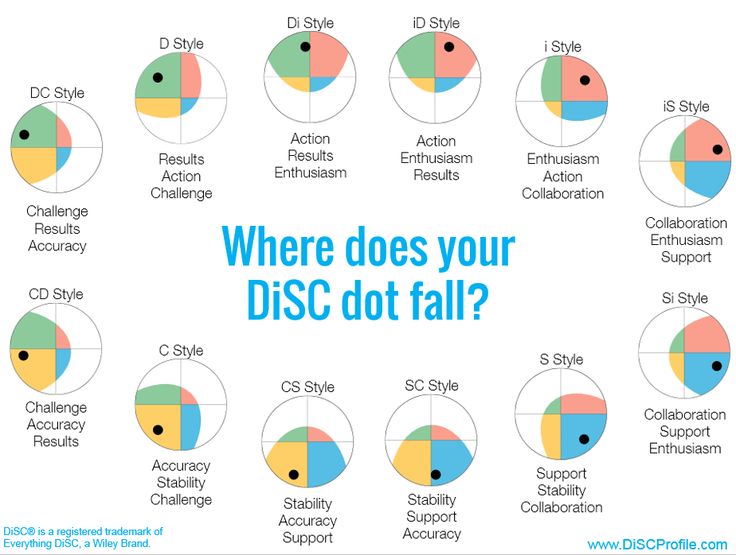
Natalia Konoplyanikov,
browser at LABA
The DISC model describes four personality types: dominant, influential, consistent, and conforming. DISC is the number one commercial valuation tool used by over 80% of Fortune Global companies.
IBM and DaimlerChrysler use the model in recruiting and building teams. DISC is also useful for sales managers - the model helps to find an approach to different types of customers.
About this - in our article based on materials from the German online magazine Impulse.
The DISC Model and the Four Styles of Behavior
In the 1920s, psychologists Carl Gustav Jung and William Marston (separately) searched for the causes of repetitive behavior in people.
They came to the conclusion that our behavior is based on upbringing, experience and socialization: if a certain strategy was successful once, we use it again and again.
That is why we can talk about personality types that have a stable set of characteristics.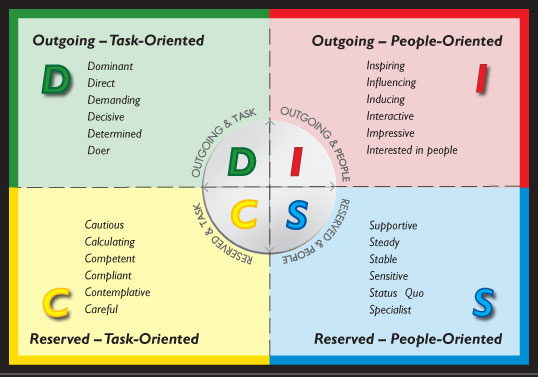
The research of William Marston (not only an eminent psychologist, but also the creator of the Wonder Woman comics) formed the basis of the DISC model.
Psychoanalysts proceed from the fact that there are two types of people: extroverts, for whom it is important to be the center of attention, and introverts, for whom reflection is important.
In addition, people can be divided by priority.
For a goal-oriented (or task-oriented) personality, the main thing is to achieve what was planned at any cost. The person-oriented type tries to surround himself with people whom he appreciates and who appreciate him.
So we get four combinations describing personality types according to DISC:
#1. Extroversion + goal orientation = dominant type (D - Dominance)
These are born leaders, they are straightforward and proactive. They make decisions quickly, are focused on results and progress.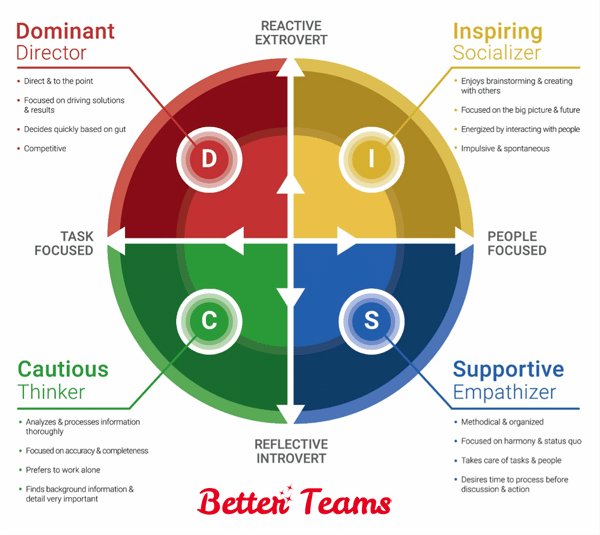
#2. Extroverted + people-oriented = influential type (I - Inducement)
Optimistic and cheerful people who easily win the favor of others.
#3. Introversion + human orientation = constant type (S - Steadiness)
Such people are attentive to others, calm, value stability and reliability.
#4. Introversion + goal orientation = appropriate (agreeing) type (C - Compliance)
This type of person is careful and tries to follow rules and regulations. They are reserved and do not seek close contact.
How to use the DISC model in sales
DISC helps you quickly assess the client, adjust to his type of behavior and choose the right argument.
Greeting
Dominant type . The client immediately gets down to business and seeks to control the conversation - give him this opportunity.
The client immediately gets down to business and seeks to control the conversation - give him this opportunity.
Influential type . It is important for such a person to establish warm contact with the interlocutor. The decision to make a deal largely depends on personal liking.
Permanent type . Such people at the stage of acquaintance try to find something in common with the interlocutor.
Corresponding type . The client is ready for discussion after a short small talk. From the very beginning, it is important for him to see that the interlocutor has carefully prepared for the meeting.
Need detection
Dominant type . Ask the client clear questions, curtseys are not needed here. At the end of the conversation, be sure to ask if he wants to clarify something else.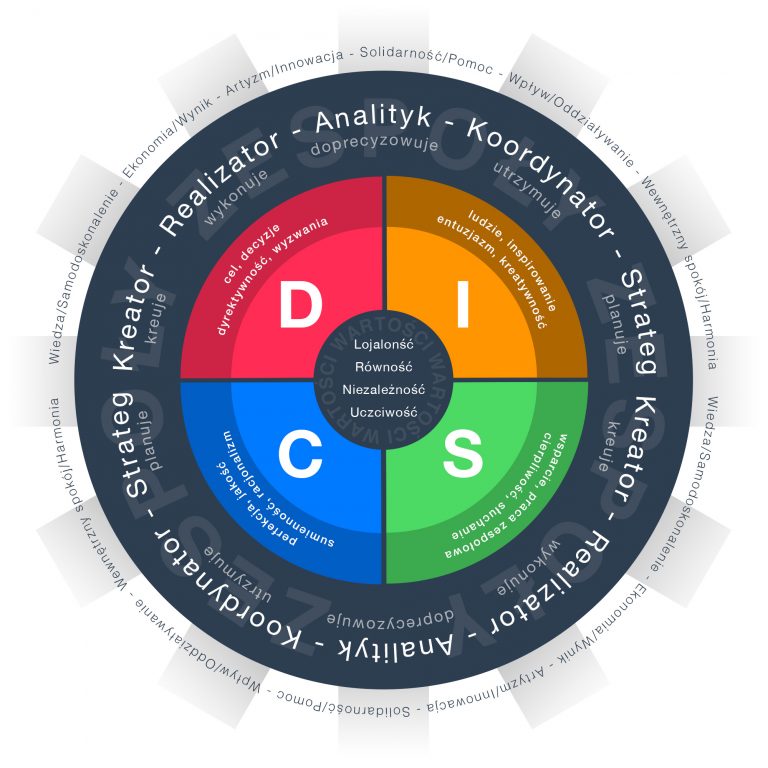
Power type . People of this type can answer questions very extensively and go far in their thoughts, so the task of the interlocutor is to return him to the topic of conversation.
Permanent type . Straightforwardness, which is good in communicating with the dominant type, will not work here. Try to "package" the question so that it does not scare away the client.
Corresponding type . These clients answer questions in detail, but you should be prepared to explain why you are asking about it.
Consulting and presentation
Dominant type . The main thing that interests such a client is what is his benefit. Don't waste his time and yours on general benefits, don't go into technical details. Dominant clients make decisions quickly and often spontaneously.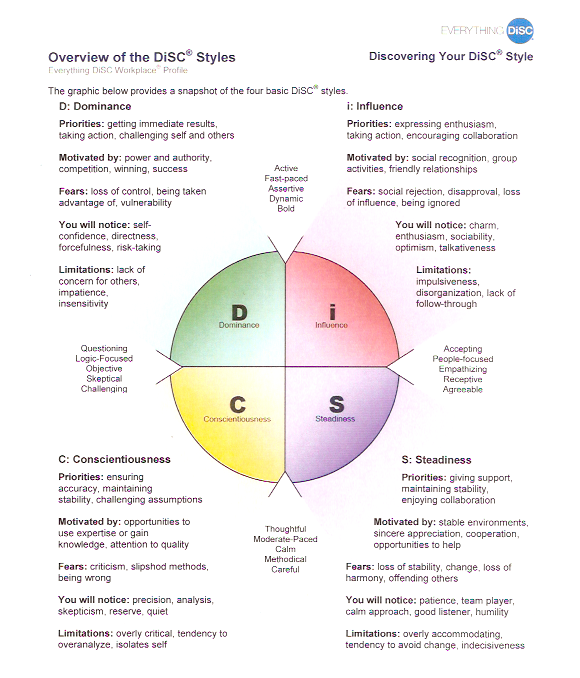
Influential type . Such a client should be told what benefits he will receive in comparison with those who have not purchased this product or service. Specifications have little effect on the purchase decision.
Permanent type . It is important for him to understand the product well and find feedback from other customers.
Corresponding type . These clients value accuracy: numbers, facts, tables, and research results. In this case, the data must be confirmed by reliable sources.
The decisive factor in the purchase will be the technical specifications. When communicating with such clients, it is better to avoid abstract phrases and long descriptions of benefits.
All business content in a convenient format. Interviews, case studies, life hacks corp. of the world - in our telegram channel.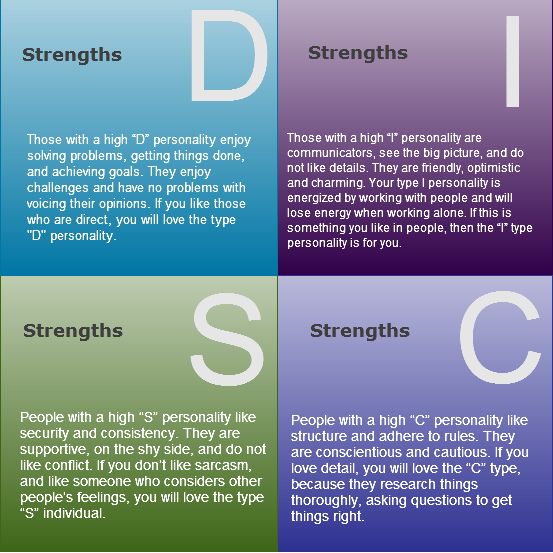 Join now!
Join now!
Closing a deal
Dominant type . Despite the fact that dominant customers often make spontaneous decisions (including under pressure from the seller), it is important for them to feel that they have made a thoughtful independent choice: it was not you who sold the product, but they bought it.
Influential type . It is difficult for such clients to make a final decision. Do not offer them a choice of several options - choose the best one and sell it.
Permanent type . People of this type need time to think, they need to consult with colleagues and loved ones. You can show them reviews from other clients and even share their contacts if it's a big deal.
It is very important not to put pressure on such clients - otherwise they close, and the chance of a sale drops sharply.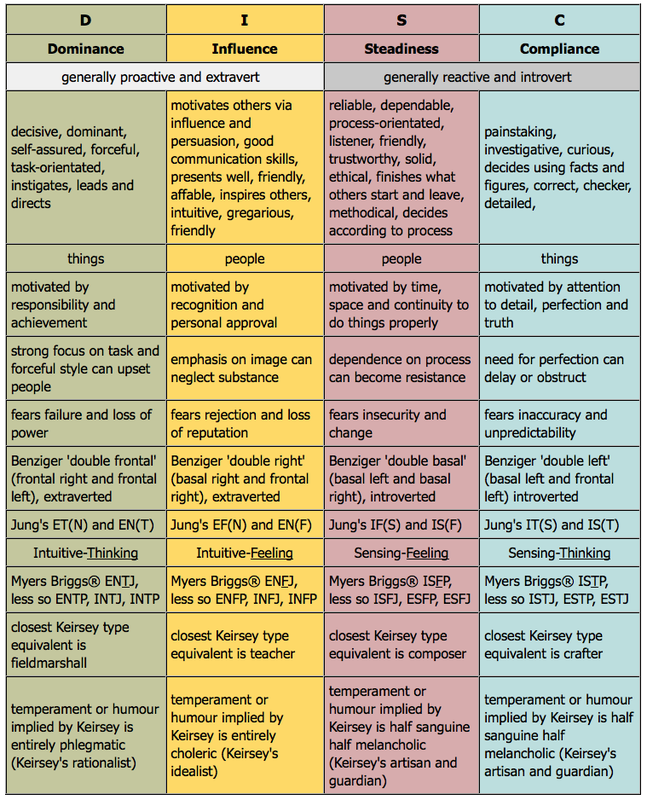
Corresponding type . Before making a purchase decision, such a client will once again evaluate all the data and critically approach your arguments. Provide additional information and allow time for reflection.
After sales communication
Dominant type . For him, the main thing is to see concrete results from using the product. Ask if he is satisfied with the purchase, whether it meets expectations.
Influential type . Discuss what personal benefits the customer gained from the purchase.
Permanent type . Clients of this type appreciate the opportunity to maintain contact with the manager with whom he made a deal.
Instead of contacting the general helpdesk, he would prefer to call an employee he knows directly.